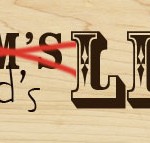 Local food is a phrase on the minds of many, easily summarized by the diverse backgrounds of those joining the food sovereignty dialogue at the recent Food Secure Canada (FSC) conference, hosted in Halifax last month.
Local food is a phrase on the minds of many, easily summarized by the diverse backgrounds of those joining the food sovereignty dialogue at the recent Food Secure Canada (FSC) conference, hosted in Halifax last month.
The farmers, fishers, dietitians, policy makers, activists, indigenous leaders, academics and more, all gathered to participate in the conversation of a healthy, sustainable & just food system.
Moreover, research points towards the increased interest of consumers, institutions and healthcare providers to embrace the local food movement. For instance, Farm to Cafeteria Canada conducted the first pan-Canadian survey of activities taken by schools, universities, colleges, and healthcare facilities to provide local food. The report, released in 2013, demonstrated that a significant number of public agencies in Canada are working towards putting more local foods on the plates of patients and students, while also identifying the current barriers.
The primary barriers identified included the lack of policy for institutional procurement, and the existing contracts that prevent the use of local food. And what is motivating these public agencies to embrace the local food movement? According to the survey, a key motivational factor is the “improved quality, freshness, taste or nutrition of the food.”
There are lots of positive reasons to support local—from supporting the local economy, farmers and fishers, protecting seeds and biodiversity, to joining the fight against climate change—the inspirations and motivations are many.
Last month I had the pleasure of visiting a NSCAD class to see how local food is inspiring them. Sam Decoste, an MFA candidate, is the teacher of a third-year animation course that celebrates the harvest of Halifax. It’s a course all about local food. Students were able to explore techniques for creating animations while at the same time engaging in discussions on the social and environmental impacts of food sold & grown within or near Halifax. Sam invited guests to speak to the class on various topics. I visited to discuss the highlights of the two conferences hosted in tandem by ACORN (Atlantic Canadian Organic Regional Network) and FSC.
Photos courtesy of Jordan Blackburn
The class researched farms and markets in Halifax and nearby towns of Nova Scotia—from the south shore to the Annapolis valley—and inspiration was gleaned from these local buisnesses. The animations showcased a variety of food practices, like wild foraging and mushroom growing, beer making and urban chicken keeping.
The 15-week program culminated in a showing at the Anna Leonowens Gallery. The artists combined their animations, collectively entitled, “Halifax Harvest—Grazing Around Town”, in a feast for the eyes. What a feast it was! It’s exciting to see local food in the many facets of our lives. Whether in conversations of policy, economy, education or art… its evident the inspiration is there.
My friend Heather Tulloch, a NSCAD student in her final year, told me a bit about her experience taking the class:
The Food Animation class offered a chance to explore and celebrate food and its importance, not only for our bodies but for our community as well. We met with bee keepers and visited garden sites within the city, discussed local diets and farming practices and went to local food presentations and events. Our classes rotated between food topics and learning animation methods. Learning the methods alongside the readings and discussions gave greater meaning to our projects, and influenced us to push our work to achieve our desired message. Overall, it was a great class, having our culminating projects featured in the Anna Leonowens Gallery was a real treat, a very warming experience that brought together a wide audience of families, foodies and students to delight in the animations and celebrate the local harvest.
The harvest show closed last week but fortunately we have a few of the class animations to use in our food-related work! So, here’s a peak at Heather’s animation of urban chicken keeping:
Written by Laura Mather, Our Food Project, Ecology Action Centre





